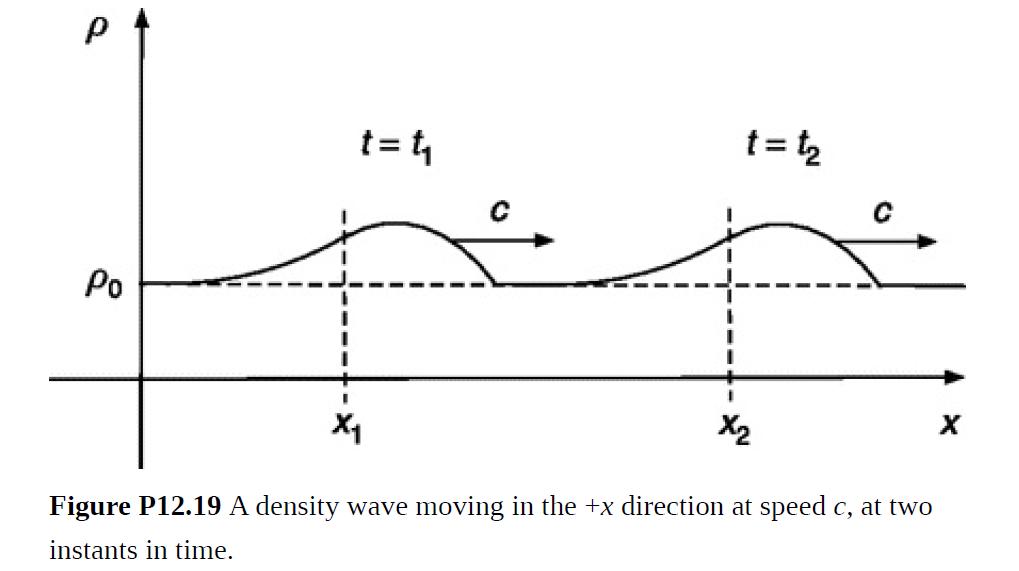Sounds are the result of small changes in pressure. To predict the speed at which such disturbances
Question:
Sounds are the result of small changes in pressure. To predict the speed at which such disturbances travel, assume that P, ρ, v, and T in a fluid are each perturbed slightly from their constant values at rest. Denoting the static values by a subscript zero and the time- and position-dependent perturbations by primes, and setting v0 = 0,
In sound transmission the velocity and temperature gradients are small enough that viscous stresses and heat conduction are each negligible, making the process isentropic. As outlined below, this leads both to Eq. (12.4-1) for c and to the identification of c as a wave speed.
(a) Starting with the time-dependent, one-dimensional continuity and inviscid momentum equations, and assuming that products of primed quantities are negligible, show that
(b) Under isentropic conditions the pressure and density gradients are related as
where the subscript S denotes constant entropy. Use Eq. (12.5-28) and the ideal-gas law to show that (∂P/∂ρ)S = γRT/M, which has the dimension of velocity squared (L2 T−2). Because this quantity is positive, it may be denoted as c2.
(c) The physical significance of c is revealed by returning to the continuity and momentum equations. Show that they can be combined now to give
A partial differential equation of this form is a wave equation. (The same equation governs v.)
(d) Wave equations are among the most thoroughly studied partial differential equations, but detailed solutions are not needed to interpret c. Show by substitution that Eq. (P12.19-5) has solutions of the form
where A and B are any functions that are differentiable. That x and t can be combined into a single variable as x ± ct indicates that c is a wave speed. For example, suppose that ρ(x, t) = A(x − ct) and B = 0. At time t1 the density at position x1 is A(x1 − ct1). At a later time t2 that density will be replicated at the position x2 that keeps the functional argument the same.
That is, x2 – ct2 = x1 − ct1 or Δx = x2 – x1 = c(t2 – t1) = c Δt. Because each value of ρ migrates a distance Δx = c Δt in a time Δt, there must be a density wave traveling at speed c in the + x direction, as depicted in Fig. P12.19. Pressure variations accompany density disturbances and therefore travel at the same speed. Similar reasoning shows that B(x + ct) represents waves traveling at speed c in the − x direction.
Speeds of sound predicted from Eq. (12.4-1) are typically within 1% of values measured for various gases at atmospheric pressure (Thompson, 1972, p. 165). This confirms that sound transmission is isentropic, rather than isothermal. In a perfectly incompressible fluid, c = ∞. In the above derivation the bulk fluid was assumed to be stationary. More generally, c is the speed of sound relative to the fluid velocity.
Step by Step Answer:

Introduction To Chemical Engineering Fluid Mechanics
ISBN: 9781107123779
1st Edition
Authors: William M. Deen





